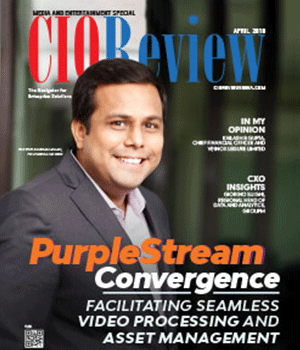
Learnings from Digital Transformation and Actionable Analytics Implementations
Subhash Kelkar, CIO, Mahindra Holiday and Resorts | Monday, 27 March 2017, 07:29 IST
 Are you ready?
Are you ready?
Various digital initiatives such as social media integration, mobile apps, SEO, online channels - website, WhatsApp, text, chats, etc. usually demand challenging Service Level Agreements (SLAs) and the organization’s backend systems are rarely ready and properly stitched up to take on this additional load. A complaint on twitter or a mobile app demands a different response time as compared to a call. One needs to rethink integration and remove all bottlenecks that slow down end-to-end flow. For some organizations, it might mean going back to the basics and rehashing business processes.
For actionable analytics, while having current and correct data is important, it is equally essential that the data should be complete. Till a few years ago, we used to only collect email ids and phone numbers of prospects and customers, but now we also capture social media related information such as their Facebook id or Twitter handle. In addition to this, if we are to do justice to data analytics we must capture positive as well as negative data cuts. For e.g., an analytics model for referrals would demand data around successful as well as failed referrals from customers. Today, analytics are available for how a customer interacts with mobile apps. Customers now expect relevant content, customized offers and recommendations based on their past behavior and their current interest areas as reflected in their social media interactions. It is thus, a good idea to nurture/enrich the data available in the system with inputs from different touch points.
Organizations seldom factor in budgets for implementing the above mentioned backend readiness and important activities such as content creation for different form factors, performance testing, etc.
Execution is the key
A good Proof of Concept (POC) is much better than endless discuss-deliberate-disburse cycles. Absorb the learnings from POC and conclude in favor of implementing a workable system. Phased agile incremental deliveries instead of a big bang approach helps businesses experience the solution early during show and tell sessions every few weeks, thus enabling quick course correction, reducing rework and building confidence in the solution. It also helps businesses be a part of the solution development journey and impact adoption when the system goes live. The mantra is to ‘Test-fast, fail-fast, fail-cheap’.
Implement happy path scenarios before exceptional scenarios and do a cost-benefit analysis to reduce the feature list and make it more manageable. Spend more money on a feature that you will use the most, rather than build a fancy feature that you may only use once in a while. As a team we need to adopt a pragmatic rather than a perfectionist approach
Finally, the success of an implementation lies in forming a competent cross-functional team from within the organization and cherry-picking critical position resources from partners.
Beware of toys and over-promising partners
There are tools and products in the market which promise sophisticated solutions and CIOs go after them in the manner of a silver bullet to solve the problem at hand. However, as CIOs we need to spend every dollar cautiously. Before finalizing the product or tool, one needs to check the business benefits it has delivered in other places.
While selecting a partner, one needs to ensure ref-check on an implementation within the same domain and in the recent past – preferably in the past one year - in one’s geography. Fit for purpose and fit for size are both important dimensions to choose who you would work with. The most important match is a value system match. The decision should also be based taking into consideration important aspects such as timelines, budgets, organization culture, etc.
Be ready to learn and teach!
Unlike many implementations, analytics is an iterative process. One way of doing this is to educate them in every interaction. This could be during a requirements gathering workshop, show and tell sessions, review meetings, etc.
Building a 360 degree view of a customer across channels is one of the biggest challenges and needs to be thought through. This is the most critical factor for successful transformation and requires a holistic relook at business processes and how these are implemented in the IT stack.
Both business and IT need to have an open mind to accept intuitive insights that these systems throw up. At times, you may end up getting completely non-intuitive insights from data analytics.
CIO Viewpoint
Technology changing landscape of Media and...
By Kailash B Gupta, Chief Financial Officer and VP, Inox Leisure Limited
How Digital and AI is re-defining customer...
By Rajat Tyagi, CIO & Digital Business Head, PVR
Need of Information Security in Today's World
By Sriram Naganathan, President – IT & Digital Initiatives, Liberty Videocon General Insurance Company
CXO Insights
Post-Pandemic Marketing: Why Omnichannel...
By Harsha Solanki, Managing Director-India, Infobip
The Future Of The Workplace Design And The...
By Vipin Pungalia, Director - Professional Segment, Sennheiser India
Taking Businesses To The Next Level By...



.jpg)
.jpg)





